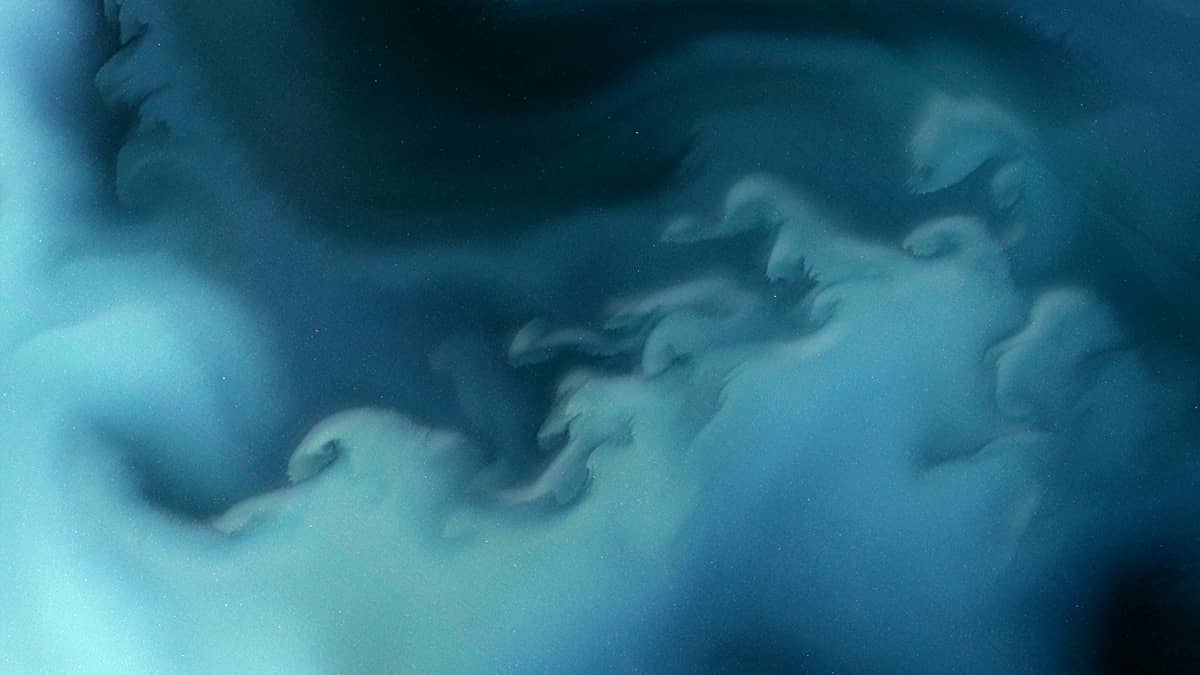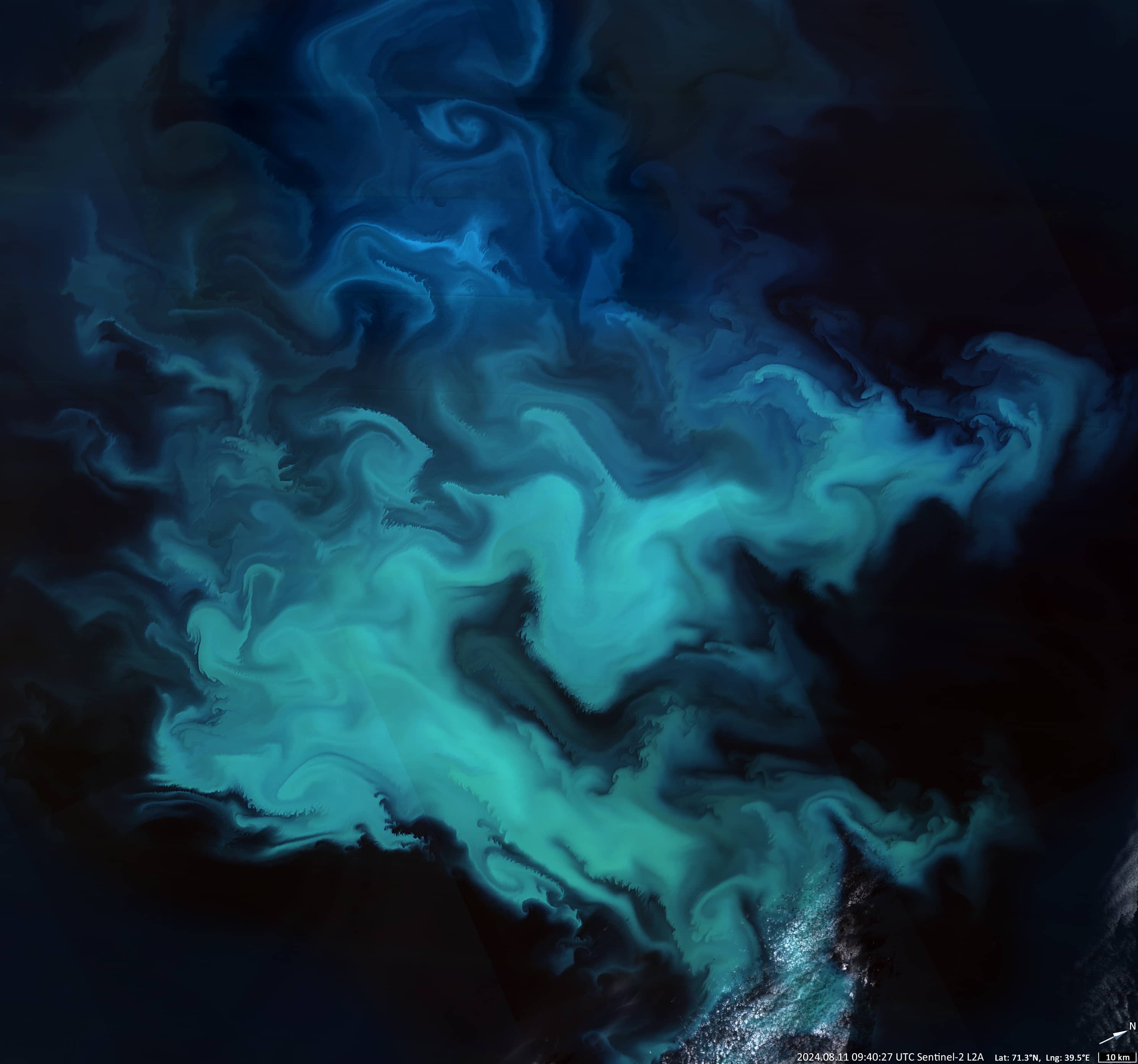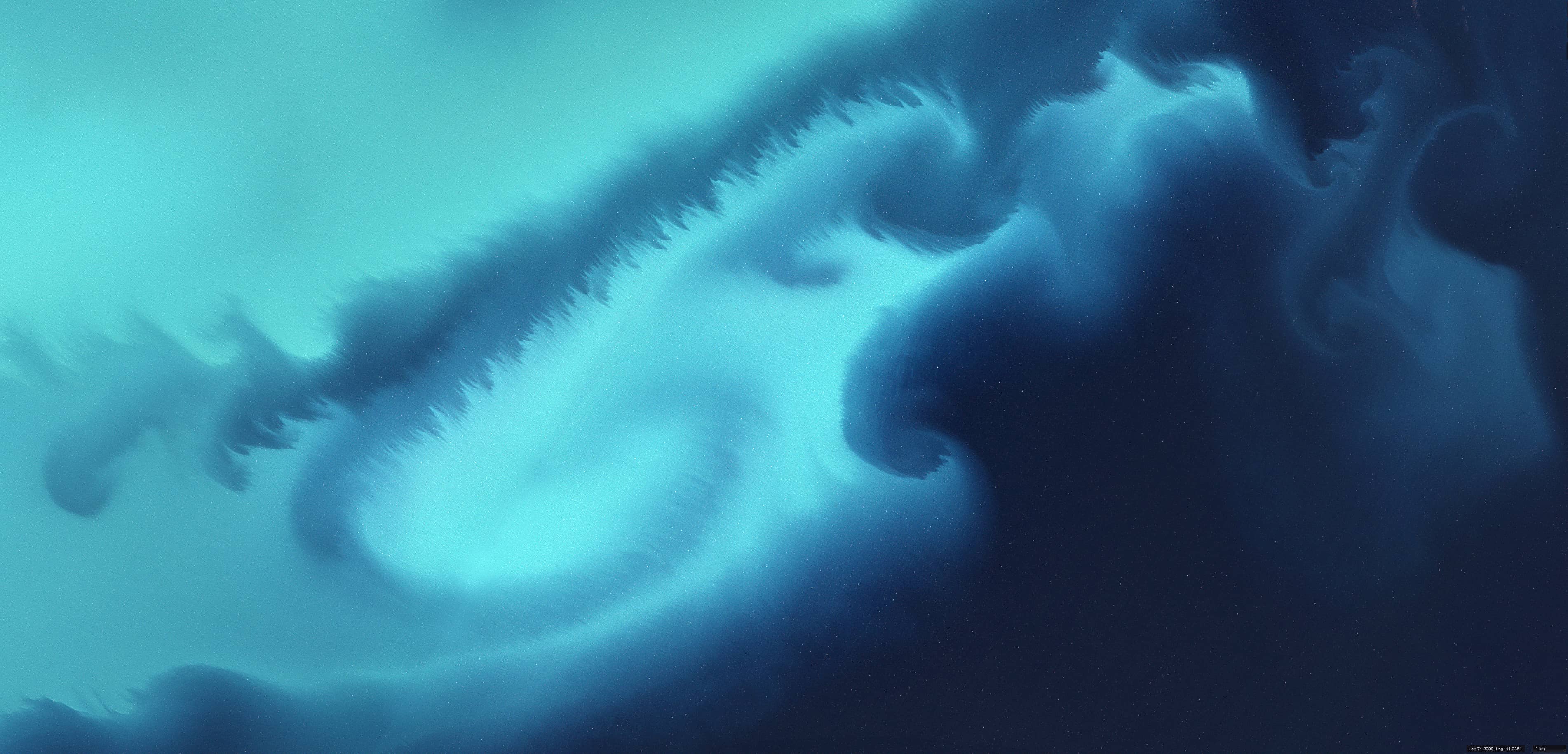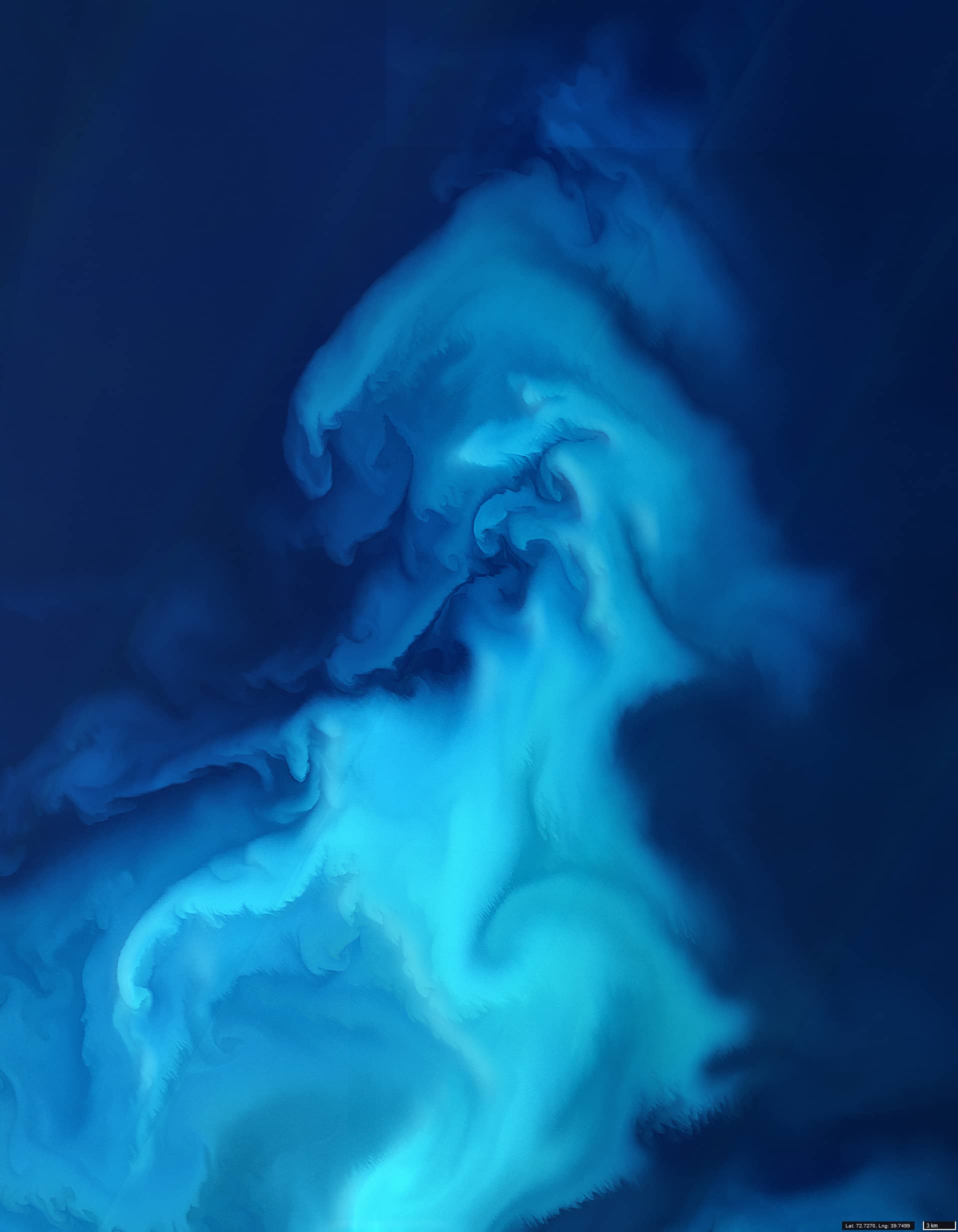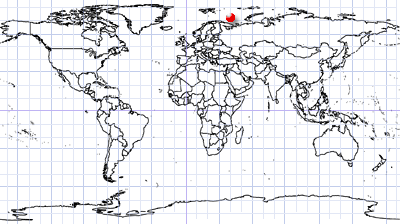
Algae Bloom in Barents Sea
Barents Sea | Southern Arctic Ocean
Date of acquisition: August 11th, 2024 | 09:40:18 UTC
Sensor: Sentinel-2 L2A
Coordinates: ca. 71°N, 40°E
The Barents Sea is a marginal sea of the Arctic Ocean and lies on the continental shelf. The sea typically experiences two main phytoplankton blooms per year, with diatoms peaking in May and June and coccolithophores in August.
This period is characterised by high light intensity during the 24-hour daylight of the Arctic summer and an abundance of nutrition. At this time, phytoplankton bloom in the Barents Sea can extend for hundreds of kilometres and show particularly intense colours. The algal bloom in this image covers an area of about 45,000 km2, slightly larger than the Netherlands.
As the Barents Sea is one of the cloudiest regions and Sentinel-2 does not fly over a specific location every day, it is difficult to find a cloud-free, high-resolution image of the entire bloom area. This time it was possible. The milky blue colour of the algae in the image indicates that the bloom contains coccolithophores, phytoplankton coated with white calcium carbonate. This is most likely Emiliana huxleyi.
In addition, images of specific regions of the algae field are provided to show the beauty of the colours and the dynamics of the water currents.

